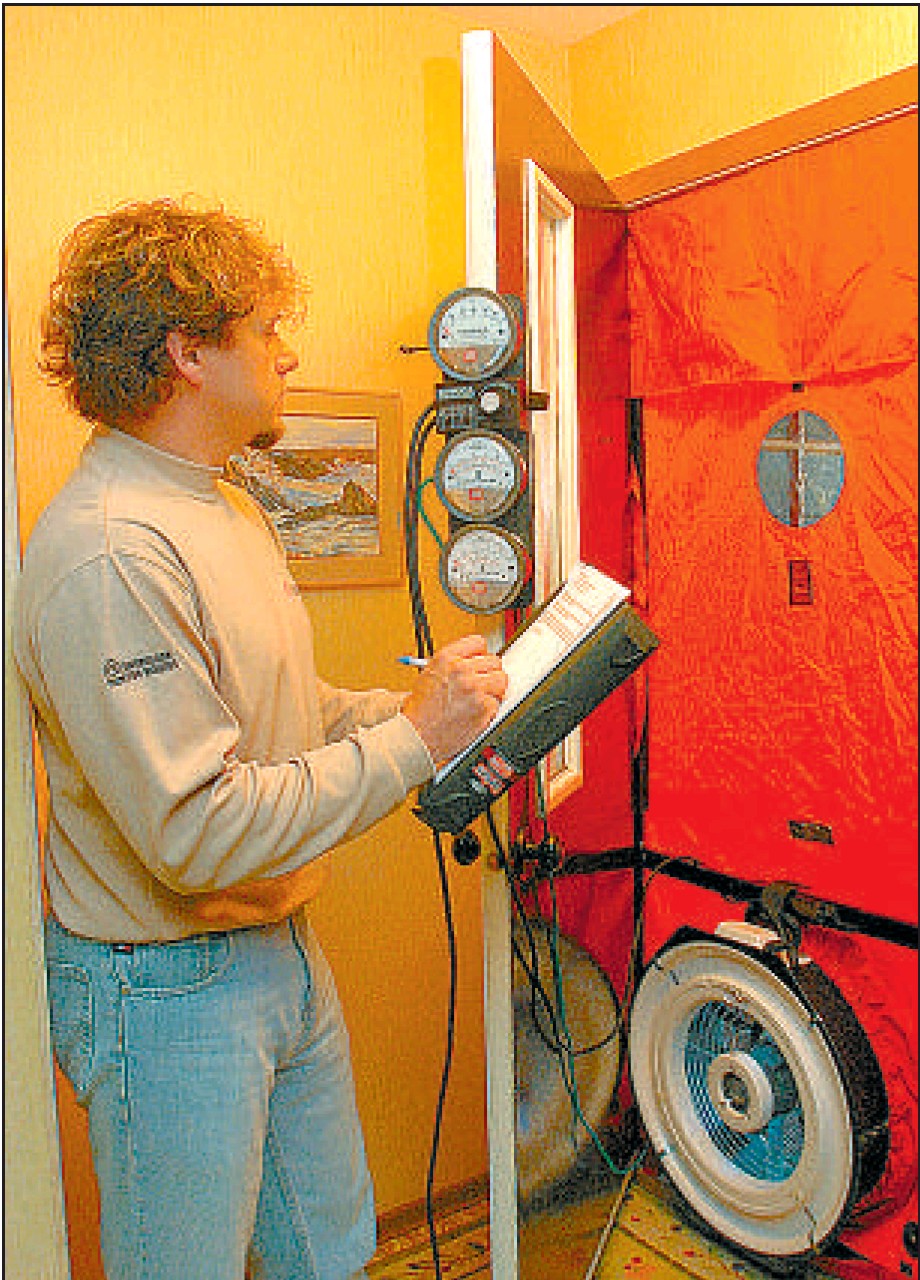GOVERNMENT GRANTS: Now you can get higher rebates for making home more energy-efficient
MIKE HOLMES
Province

A specialist performs a blower door test for air tightness as part of a post-retrfit audit on a house. – CANWEST NEWS SERVICE
If you could do a renovation on your home that cost you a fraction of what it’s worth, and that continued to save you money as long as you owned your home, wouldn’t you do it? That’s what you can get with the eco-ENERGY Retrofit program.
This program is offered through the federal government, which has increased the amount of grant money for energy efficient renovation retrofits. There’s an extra $300 million being invested over the next two years. Most provinces are stepping up as well to match the available money, dollar for dollar. For example, you can get up to 5K in federal and up to 5K in provincial rebates on work you’ve had done to improve the energy efficiency of your home.
The point of the eco-ENERGY retrofit grant is to get homeowners to do renovations that effectively reduce greenhouse gases and air pollution. So you save money and reduce your carbon footprint.
The money is non-taxable and is available for upgrades on heating systems, ventilation, air conditioning, windows doors and even toilet upgrades. You can: replace old inefficient furnace/AC or water heaters; improve insulation so your house isn’t leaking heat; replace drafty windows and doors.
To take advantage of it, you need to first have an energy audit or evaluation of your home, by a certified auditor. The energy audit will show you where your home is losing energy through air leakage, drafts and areas of heat loss and where you can improve its performance. (If you don’t have an energy audit BEFORE you do the upgrade, you will not qualify for the rebate.)
The energy auditor uses the blower door test to measure the rate of air leakage in your home. An energy-efficient home will have very little air leakage.
Auditors are able to locate draughts and they’ll note the locations of leaks and give that information to the homeowner in the energy audit. Now the homeowner knows what they need to fix, and where the leaks are so they can do the repairs and upgrades.
After your initial audit, you’ll get an evaluation report, and a rating. Then, you can think about what kind of energy upgrades you want to do, and what you can afford.
Then, after you’ve had the work done, you have to make sure you get another evaluation to verify you’ve made the necessary improvements. This will prove you have a higher rating and the improvements you made have increased the energy efficiency of your home.
After your first audit, you have 18 months of complete some or all of the work, then book your post-retrofit audit. Then, you can apply to your provincial and federal — and in some cases, municipal — governments for the rebate.
You must make sure the work and the post-retrofit evaluation is done before the program ends (March 31, 2011). And, of course, keep all proof of work done (work orders, receipts). You need documentation. The work will need to be verified during the final energy audit.
You can do simple jobs to take advantage of the rebate, it doesn’t need to be very complicated. Replace a toilet or your furnace. Obviously, upgrading your insulation is a bigger job as it involves tearing out drywall and plaster and replacing it. Some fixes are cheap, like caulking your windows. Some will cost a lot more, like buying new EnergyStar appliances or replacing your windows with EnergyStar rated ones. But everything you do to improve the energy efficiency of your home will help.
For more information on home renovations, go to makeitright.ca
